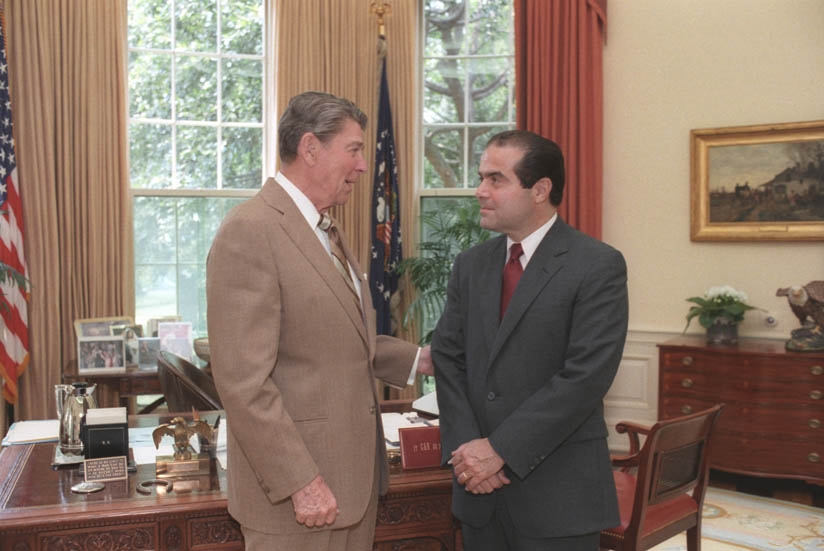Local News
Sen. Johnson says Supreme Court takes up limited cases, can wait until 2017 to name next justice

Wisconsin Senetor falls in
line with other Republicans
Wisconsin Sen. Ron Johnson is among Republicans hoping to wait until after the next president takes office before appointing the next Supreme Court justice.
Although it’s the president’s right to nominate the next Supreme Court judge to take the seat of recently passed Antonin Scalia, Johnson believes it’s not.
“Rather than have a lame duck president  decide that, let’s have the American people decide that,” Johnson said on WIZM Monday afternoon with Mitch Reynolds, “and, again, if they like a Democratic president and Democrats in the Senate, they’ll obviously accept that result.”
decide that, let’s have the American people decide that,” Johnson said on WIZM Monday afternoon with Mitch Reynolds, “and, again, if they like a Democratic president and Democrats in the Senate, they’ll obviously accept that result.”
Johnson went on to discuss the Supreme Court’s role in the country.
“The court takes up a very limited number of cases,” Johnson continued. “This is not the end of the republic if someone isn’t appointed right away. It can wait until 2017. That’s what I recommend.
“The world’s not going to end. We’ve had Supreme Court vacancies go for 100s of days.”
Of course, the last 10 Supreme Court vacancies have gone no more than 99 days without a replacement, and as little as 50 days dating back to Scalia, himself, in 1986, who was nominated after 85 days.
There have been droughts between justices, but there also have been droughts since that’s happened.
The longest a seat had gone empty was 391 days, dating back to 1969 with Justice Abe Fortas. But a vacancy over 200 days has happened just three times in the 20th century. Three times – 1969, 1910 (281 days) and 1938 (205 days).
And, even that drought in ’69 was an odd one, as the Washington Post attempted to explain:
“When Justice Fortas stepped down in May 1969, it would be a full year (well, 363 days to be precise) before his successor was confirmed. One reason it took so long to fill the Fortas seat is because the Senate rejected President Nixon’s first two nominees for the seat — Clement Haynsworth and Harold Carswell — before confirming Harry Blackmun. The Court did its work with only eight justices in the interim. (Also of note, the Court went several months with only seven justices in 1971 after Justices Harlan and Black stepped down that September. Their replacements were confirmed in December.)
“Speaking Fortas, the last time there was a Supreme Court nomination in a presidential election year was 1968, when President Johnson nominated then-associate justice Fortas to succeed Chief Justice Earl Warren and nominated Homer Thornberry to replace Fortas as an associate justice. Fortas was nominated in June 1968, but would not be confirmed as chief. Political opposition, largely from southern Democrats, and concerns about alleged ethical improprieties kept Fortas from becoming the chief justice, as not even a majority of Senators would vote for cloture on his nomination. President Nixon eventually named Warren’s replacement as chief, Warren Burger. It should be noted, however, that Chief Justice Warren continued to serve on the Court until Burger was confirmed, so while there was no election year confirmation, there was no election year vacancy either.”
Despite the rarity, if not oddity, of a president not nominating a Supreme Court justice vacancy, Johnson reiterated what Senate Majority Leader Mitch McConnell said just hours after Scalia’s death almost word-for-word.
“The American people are going to go into the voting booth and they’re going to decide the direction of the country,” Johnson said about the next presidential vote, “and they have an opportunity to decide the direction of the Supreme Court, as well.
“So I agree with (Sen. Mitch McConnell), let the American people decide which way the court is going to lean.
McConnell had this to day: “The American people should have a voice in the selection of their next Supreme Court Justice. Therefore, this vacancy should not be filled until we have a new president.”
Here’s a list from the New York Times of every Supreme Court justice nominated/withdrawn/rejected and the days it took.



